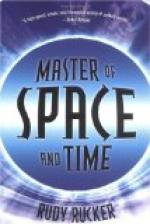With his bell telegraph and his relay Henry had the elements of a successful system. He failed, however, to develop them practically or to introduce them to the attention of the public. He was the man of science rather than the practical inventor. Alfred Vail, joining with Morse after the latter had conceived the telegraph, but before his apparatus was in practical form, was a tireless and invaluable mechanical assistant. His inventions of apparatus were of the utmost practical value, and he played a very large part in bringing the telegraph to a form where it could serve man effectively. After success had been won Morse did not extend to Vail the credit which it seems was his due.
Yet, though Morse made free use of the ideas and assistance of others, he was richly deserving of a major portion of the fame and the rewards that came to him as inventor of the telegraph. Morse was the directing genius; he contributed the idea and the leadership, and bore the brunt of the burdens when all was most discouraging.
Honors were heaped upon Morse both at home and abroad as his telegraph established itself in all parts of the world. Orders of knighthood, medals, and decorations were conferred upon him. Though he had failed to secure foreign patents, many of the foreign governments recognized the value of his invention, and France, Austria, Belgium, Netherlands, Russia, Sweden, Turkey, and some smaller nations joined in paying him a testimonial of four hundred thousand francs. It is to be noticed that Great Britain did not join in this testimonial, though Morse’s system had been adopted there in preference to the one developed by Wheatstone.
In 1871 a statue of Morse was erected in Central Park, New York City. It was in the spring of the next year that another statue was unveiled, this time one of Benjamin Franklin, and Morse presided at the ceremonies. The venerable man received a tremendous ovation on this occasion, but the cold of the day proved too great a strain upon him. He contracted a cold which eventually resulted in his death on April 2, 1872.
While extended consideration cannot be given here to the telegraphic inventions of Thomas A. Edison, no discussion of the telegraph should close without at least some mention of his work in this field. Edison started his career as a telegrapher, and his first inventions were improvements in the telegraph. His more recent and more wonderful inventions have thrown his telegraphic inventions into the shadow. On the telegraph as invented by Morse but one message could be sent over a single wire at one time. It was later discovered that two messages’ could be sent over the single wire in opposite directions at the same time. This was called duplex telegraphy. Edison invented duplex telegraphy by which two messages could be sent over the same wire in the same direction at the same time. Later he succeeded in combining the two, which resulted in the quadruplex, by which four messages may be sent over one wire at one time. Though Edison received comparatively little for this invention, its commercial value may be estimated from the statement by the president of the Western Union that it saved that company half a million dollars in a single year. Edison’s quadruplex system was also adopted by the British lines.




